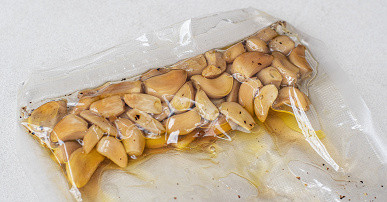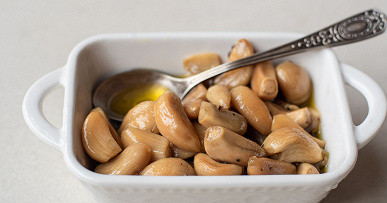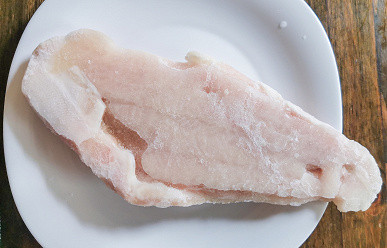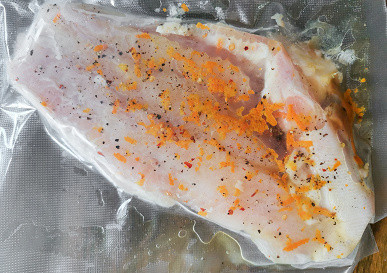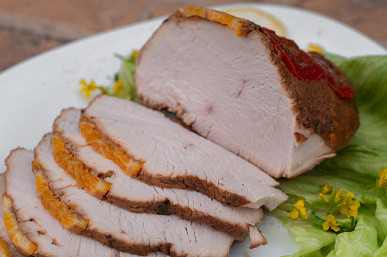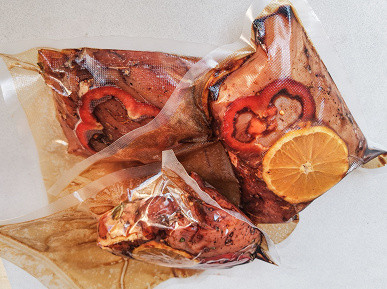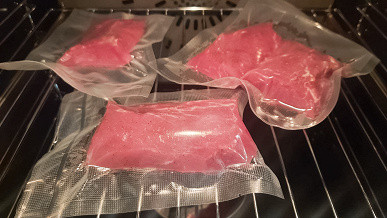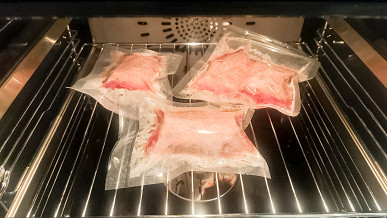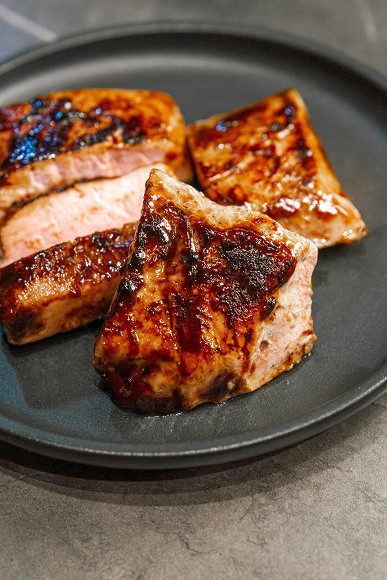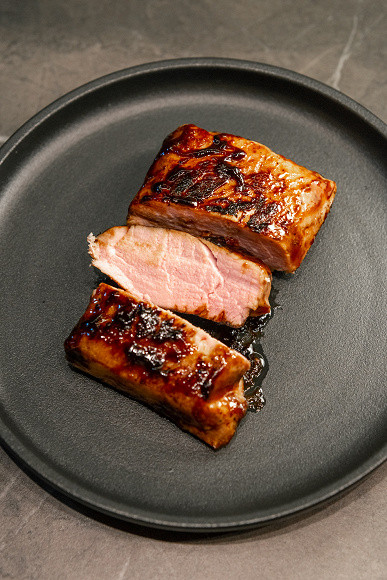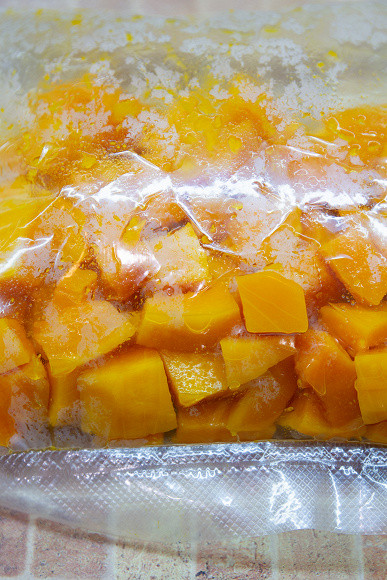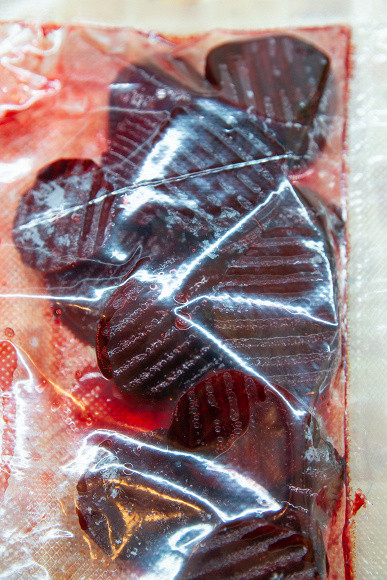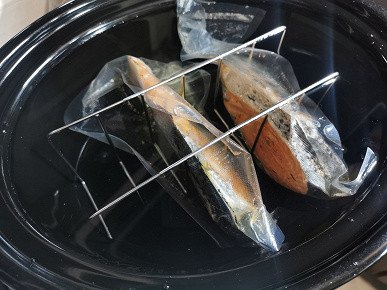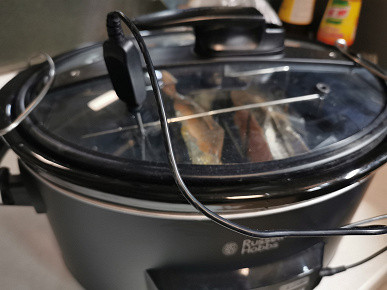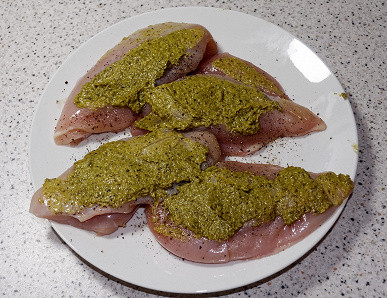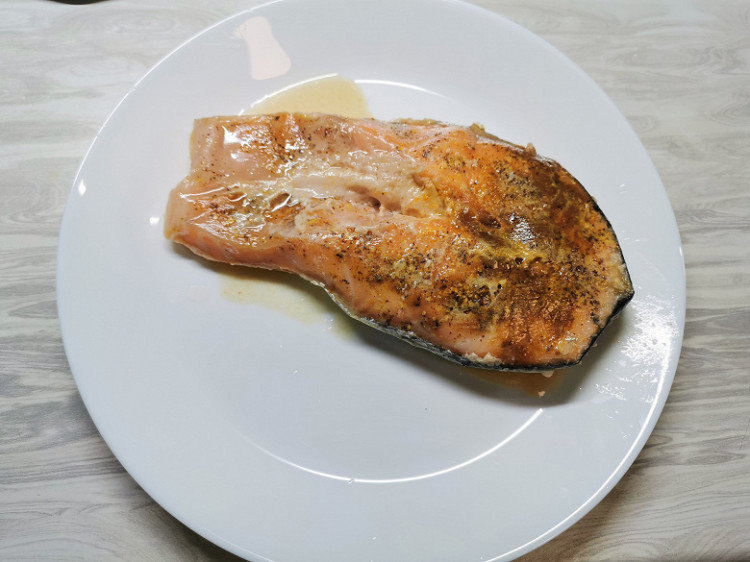We have already repeatedly drawn attention to the method of cooking using sous vide (or sous vide), which translated from French means “under vacuum.” This approach involves placing meat or vegetables in a plastic bag with the air evacuated, then slowly cooking them at a relatively low and precisely controlled temperature, most often in a water bath.
We do not hide the fact that sous vide has won our admiration, and we strive to use it at every opportunity. This is especially true when you need to cook perfectly cooked meat or vegetables, and there is no need to rush (for example, when a dish needs to be served in an hour or two).
Sous vide is not about rushing. Some types of meat can be cooked for 10-12 hours (or even longer, they claim that the result will be even tastier). However, on the other hand, sous vide allows you to save time. How is this possible? This technology practically does not require the active participation of the cook. Simply vacuum seal your food, place it in a suitable container, add water… and you're ready to go about your business. The main thing is to ensure that the water does not evaporate too early (and there are special solutions for this).
Simply remove the finished product from the bag, dry it, quickly fry or cut it if necessary, and you can serve it.
Equipment
To get started, you'll need a vacuum sealer and the sous vide machine itself, also known as a temperature-controlled immersion boiler or a stationary water bath with precise temperature control. While there are accessories that can make sous vide cooking more convenient, they are not necessary.
Sous vide equipment remained a restaurant specialty for a long time and was therefore quite expensive. Home cooks often could not afford such devices, and may not have seen the need for significant expense.
Over the years, homemade options emerged, but they were also quite expensive. But the situation began to change, and already in the early 2000s, more affordable solutions appeared on the market, even on the Russian market. However, the question of what exactly we pay for when purchasing such devices remained open.
In reality, the components required for home sous vide machines are not that complex. The electronic components include a heating element, a temperature sensor and a control unit that regulates the water temperature. Consequently, the issue of high cost remained a matter of speculation.
A few years ago, an interesting “story” appeared that fish can be cooked in the dishwasher by packing it in a bag and running the wash cycle. While this method has its uses, it is not suitable for meat as there is not enough time in the dishwasher to cook it.
Over time, sous vide techniques have become more accessible.
Immersion sous vide Kitfort KT-4057
This device is a typical immersion sous vide. It is made in the form of a clothespin, where the lower part is immersed in a bowl of water, and the upper part is attached to the rim of the bowl. There is a control panel on the body of the device, which allows you to set the temperature in the range from 25 to 90 degrees with an accuracy of 0.1 °C and the cooking time up to 59 hours 59 minutes.
The control is carried out using an electronic system, and an LED display is provided for user interaction.
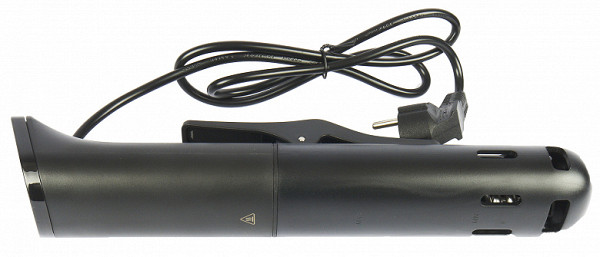
The power of this device is quite satisfactory for home tasks and is 800 W, and its retail price does not exceed 6,000 rubles. The maximum recommended volume of the cooking container is 15 liters. Of course, heating 15 liters of water using an 800-watt heater will take some time. To speed up this process, you can preheat the water (in a kettle, for example) and then use sous vide to maintain it at the desired temperature for a set amount of time.
We have prepared several dishes using this appliance and all of them received high marks. Among the test recipes, we tried garlic confit (72 °C for 6 hours),
macrorus in its own juice with orange zest (we didn’t even defrost the fish fillet, but immediately set it for 2.5 hours at a temperature of 65 °C),
...as well as classic turkey ham along with butter, soy sauce marinade and spices (67 °C for 8 hours).
Electric oven Haier HOQ-F6CASGB
In this case, what appears before our eyes is an ordinary electric oven. Why is there a mention of sous vide here? The answer is that the Haier HOQ-F6CASGB is equipped with a special “Vacuum Cooking” mode, which is designed specifically for sous vide cooking.
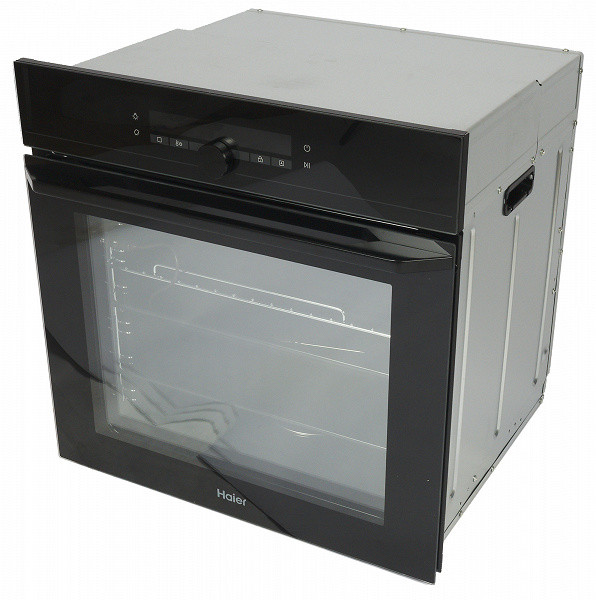
The temperature range in this model, however, is limited: from 60 to 90 °C in increments of 1 °C. These limits cover most cooking tasks, but sometimes it is necessary to set the temperature in the range of 50-55 °C, which is not possible in this oven. But there is a timer here that you can set at your discretion.
What is the fundamental difference between cooking in this oven and using a pan of water? Almost nothing. In this case, there is no water, and the food is cooked using circulating hot air, but this does not affect the quality of the finished dish.
As a test, we prepared pork tenderloin with a Hoi Sin sauce glaze.
Here's what it looked like in the oven:
And this is what the finished pork looks like after being removed from the bag.
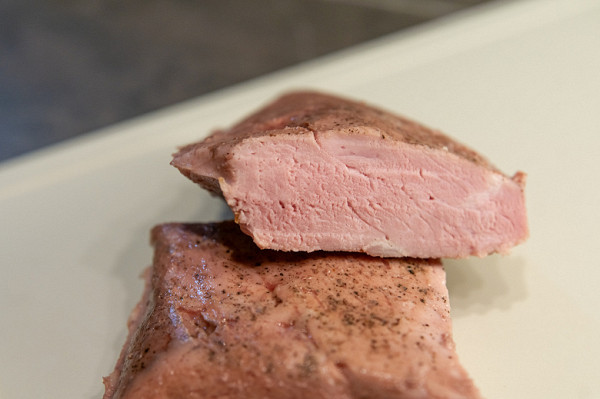
All that remains is to spread the sauce on it and lightly fry it in a hot frying pan.
For those who want to repeat: cooking the meat took exactly 3 hours at a temperature of 62 °C.
In this case, you cannot do without a vacuum sealer, but the oven is quite capable of replacing a submersible sous vide. In this way, the user can save space in the kitchen by avoiding the need to look for a place to store the sous vide and a large pan for it. However, the cost of such ovens is likely to be higher than conventional ovens. But at the same time they will have more varied modes! So, if your goal is to purchase a good and high-quality oven, then finding out about the availability of a sous vide program will be very useful.
Electric oven Samsung NV7B5645TAK
Another solution that combines the functions of an oven and sous vide is the Samsung NV7B5645TAK electric oven. As in the previous case, there is a special Air Sous Vide mode, which allows you to adjust the temperature with an accuracy of 1°C. The temperature range in this model varies from 50 to 95 °C.
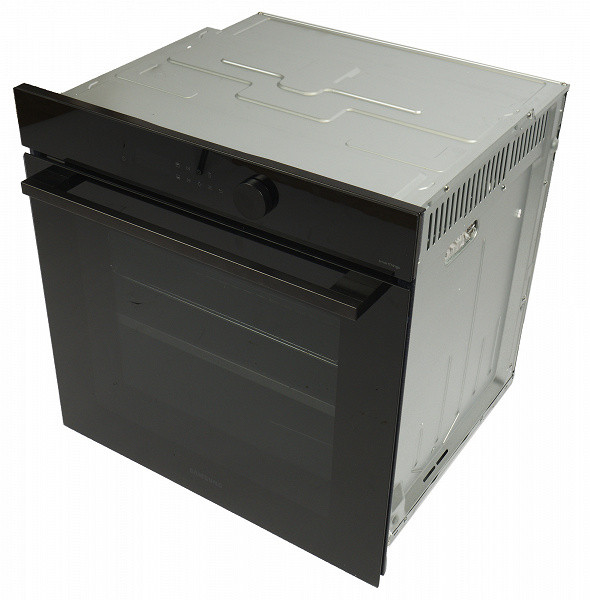
Another solution that combines the functions of an oven and sous vide is the Samsung NV7B5645TAK electric oven. As in the previous case, there is a special Air Sous Vide mode, which allows you to adjust the temperature with an accuracy of 1°C. The temperature range in this model varies from 50 to 95 °C.
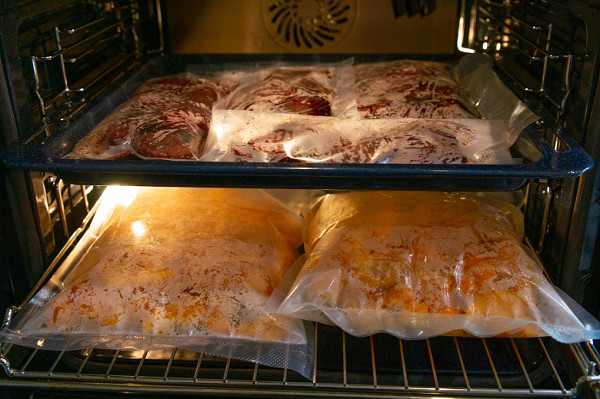
In the Air Sous Vide mode with heating to 85°C, the pumpkin reached a state where it can be mashed with a fork in just an hour; the beets took three hours to be fully cooked.
Beets became an addition to a salad of arugula and soft curd cheese with walnuts.
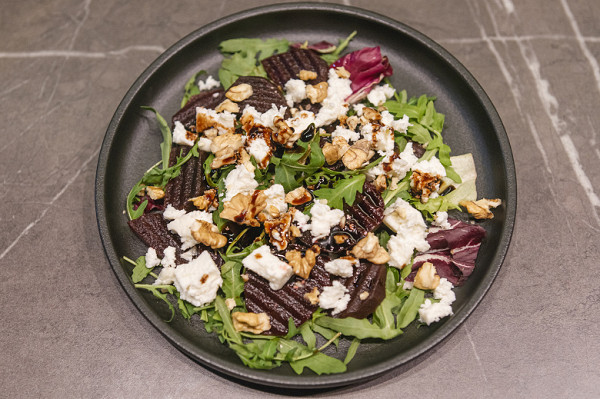
This oven also has a remote control function. Using the mobile application, it is easy to select programs or set temperature conditions. If there are concerns that the oven may turn on accidentally (for example, if a child plays with the application), then there is a blocking function. In the application, you can only select a mode, and you will need to start cooking manually, directly on the oven.
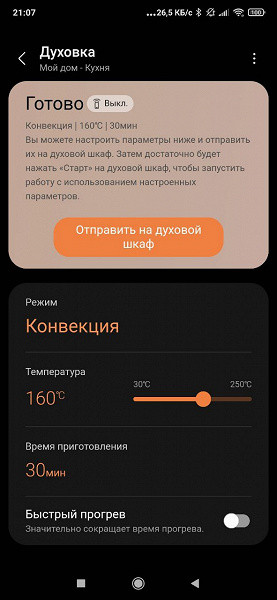
If other people are not expected to use your smartphone and you are confident in your skills, you can set the appropriate setting and start the oven directly from your smartphone. This is especially convenient if you need to prepare a dish by a certain time, but there is an urgent need to go to the store or do other things.
Russell Hobbs Slow Cooker 25630-56
To maintain the set temperature, you can use a simpler device, such as a classic slow cooker. These kitchen appliances are widely used in countries such as the USA, but in our market they are still little known and niche products.
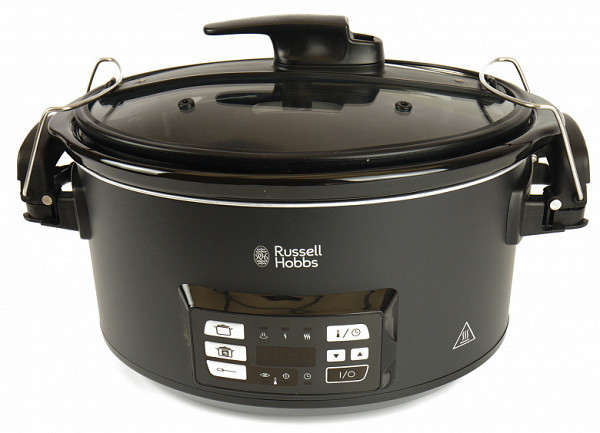
Slow cookers have a capacious and durable bowl that effectively holds the temperature. However, the number of temperature modes they have, as a rule, is limited to only two: less powerful and more powerful. However, modern models (such as the Russell Hobbs 25630-56 we tested) may have a built-in temperature probe that allows you to measure the temperature by inserting it into the meat, immersing it in the dish you are preparing, or in water (if we are using the sous vide method). .
The device comes with a special grill that allows you to conveniently place vacuum bags so that circulating water evenly washes them from all sides.
Cooking fish steaks in this slow cooker will take less than an hour.
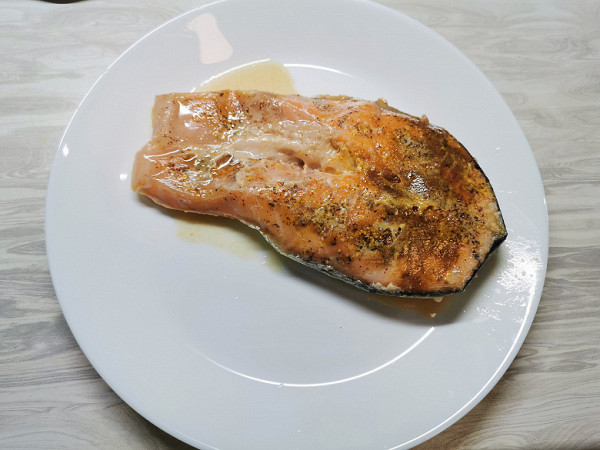
By the way, using the same devices you can prepare excellent homemade yoghurts — if only there was milk and sourdough. The raw materials can be poured into small jars or poured directly into the bowl of the slow cooker.
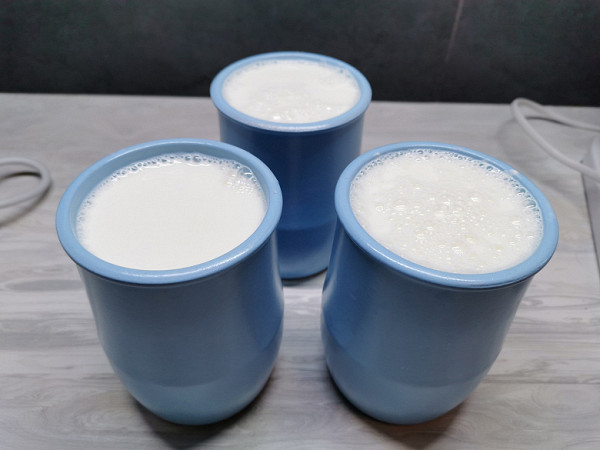
By maintaining the temperature at 40 °C for 6-8 hours and then cooling for several hours, we get thick, tasty and natural yogurt.
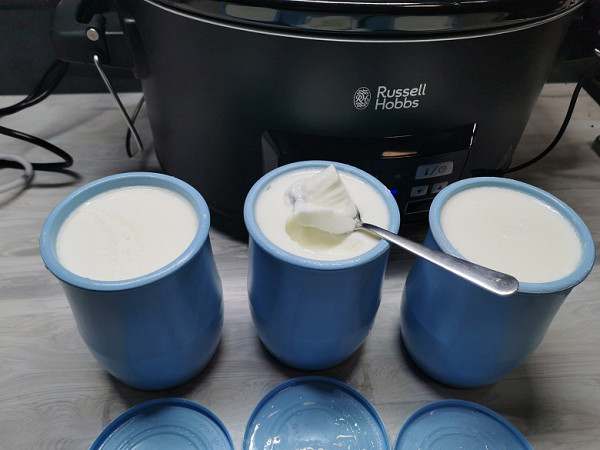
Induction hob with temperature probe Caso TC 2100
The combination of a heating tool and a temperature probe (i.e., a temperature control system) in most cases indicates that the device is suitable for using the sous vide method. In this context, it is necessary to mention again our preferred electric stove with induction heating — Caso TC 2100. In terms of technical characteristics, this is an ordinary stove that does not stand out with either increased power or any unusual solutions.
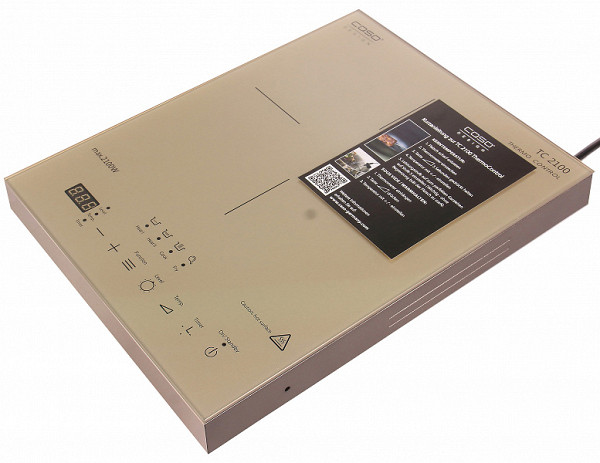
With the exception of one detail: this device provides the ability to connect a temperature probe, with which the stove can adjust the temperature in the range from 40 to 160 °C in 1 °C steps. In addition, the device has built-in temperature control (without using a probe), but in this case our interest is focused less on this function.
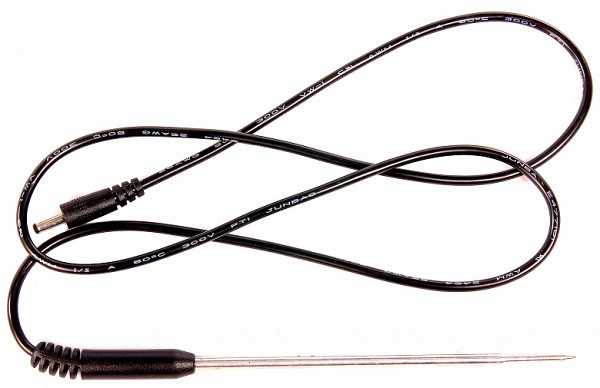
The principle of operation turned out to be quite simple. When using an external probe thermometer, two modes are available: maintaining the set temperature inside the cookware or turning off the stove when the set temperature in the thickness of the product being prepared is reached. In addition, you can set a timer.
As a test, we prepared vacuum-sealed chicken breasts with spices.
The package with the chicken was placed in a pan of water, after which the temperature was set to 63 degrees, the probe thermometer was immersed in water and cooked for 2.5 hours.
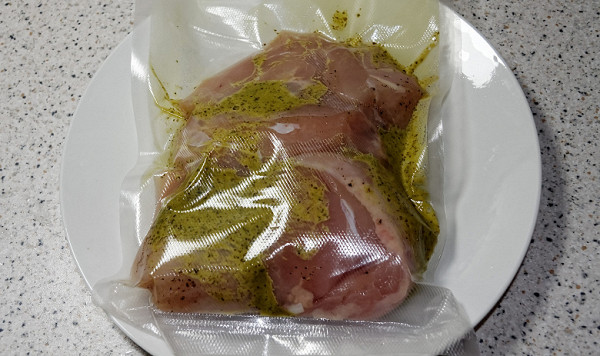
The cooked fillets can be served immediately with the pesto liquid from the bag, or cooled and stored in the refrigerator for longer storage.
Note that during the cooking process the water temperature fluctuated in the range of 62-64 degrees, which in our case does not represent a serious drawback. As shown in the photo, the fillet cooked evenly and was not overcooked.
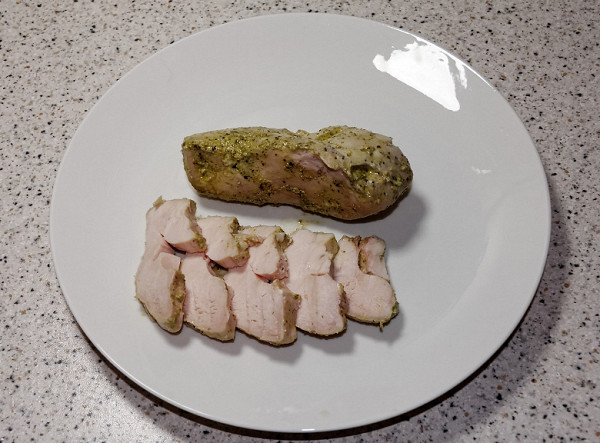
Multicooker Redmond SkyCooker RMC-M92S
Well, of course, we can’t do without our favorite multicookers. These devices have undergone significant changes in recent years. Instead of several built-in programs, custom control units have appeared that allow you not only to edit existing manufacturer programs, but also to create your own modes. The mode, presented by Redmond as “Multi-cook,” makes it possible to set the temperature in the range from 35 to 170 °C in 1 °C steps. The time in this program is adjusted in 1 minute increments from 5 minutes to 1 hour and in 5 minute increments from 1 hour to 12 hours. Although the accuracy of temperature control could be better, even with an error of 1 degree you can successfully cook most dishes, especially sous vide.
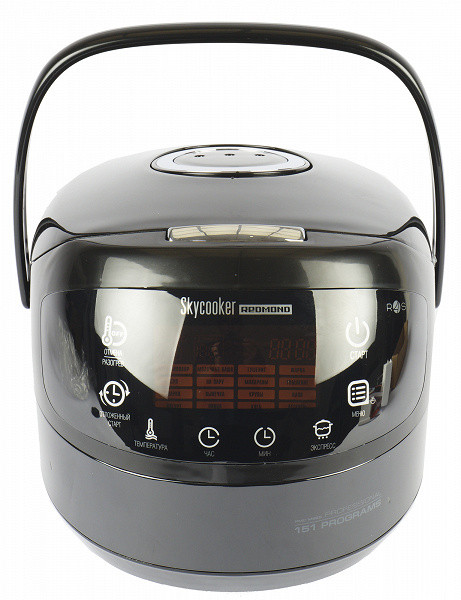
The cooking principle remains the same: we vacuum the products, place them in the SkyCooker RMC-M92S, set the required temperature and time, and then wait. The result is almost the same as with traditional sous vide. The only difference may be some deviations in the degree of doneness in steaks, where special precision in cooking is required.
However, a significant disadvantage of this solution is the small volume of the multicooker bowl and the absence of forced water circulation (water pump). Although the bowl can hold a sufficient amount of vacuum-sealed food, poor washability may result in differences in heat depending on the position of the bag within the bowl.
To avoid such situations, you have to cook in small portions: several chicken breasts, 2-3 steaks or a small piece of meat (within a kilogram). This is quite enough to prepare dinner for two or three people, but you shouldn’t count on more cooking.
conclusions
The evolution of sous vide cooking has brought about exciting changes. This technology was originally reserved for the restaurant industry and was rarely found in home kitchens. The first attempts by homegrown geeks and enthusiasts to use improvised equipment for sous vide remained something experimental.
Gradually, stationary and immersion sous vides appeared on the market, but, unfortunately, they remained quite expensive for most home cooks. However, this has sparked interest in vacuum cooking among general users.
The next important step is to significantly reduce the price of sous vide devices, making the technology more affordable. Vacuum cooking has become accessible to a wide range of users.
Today we are witnessing the latest stage of this development: the abandonment of individual sous vides in favor of more universal devices. Now you can cook in a vacuum using modern ovens, multicookers, slow cookers and electric ranges equipped with a temperature control function.
While some of these methods represent compromises in precision temperature control or cooking volume, they provide convenience and space savings in the kitchen. So, before purchasing a separate sous vide unit, it's worth considering the options you already have in your kitchen. If your interest in vacuum cooking strengthens, you can always pay attention to specialized devices.

